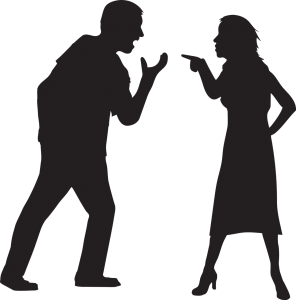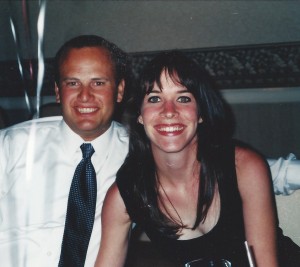 The title says it all, I caught COVID-19 (it was well over a month ago so don’t worry if I’ve been in your presence lately). Yes, I was just as surprised as you are. I live in California, which is a hotbed of cases, but where I live in NorCal, there haven’t been too many, especially in my county in the sticks. And, yes, I took the precautions we’re all told to take: wear the mask, hand sanitize, wash my hands, avoid touching my face, etc, etc, but I caught it anyway.
The title says it all, I caught COVID-19 (it was well over a month ago so don’t worry if I’ve been in your presence lately). Yes, I was just as surprised as you are. I live in California, which is a hotbed of cases, but where I live in NorCal, there haven’t been too many, especially in my county in the sticks. And, yes, I took the precautions we’re all told to take: wear the mask, hand sanitize, wash my hands, avoid touching my face, etc, etc, but I caught it anyway.
Everyone has been so curious about my experience, asking questions upon questions. My guess as to why is because 1) they don’t know many people who have had it yet (at least not that they know of), and 2) they want to know the details for if/when they catch it. So, here’s my rundown.
I went shopping in a nearby town on a Sunday, an area much busier and more populated than our small town. I went to three stores. I’m pretty certain that I picked it up somewhere during that time. If I count back the days, it makes the most sense. I felt symptoms four days later. I was driving back from visiting my husband’s family while he and other family members went on a fishing trip.
During the two-hour ride home I started to feel “off,” that crappy feeling when you know that you’re catching something. My chest felt tight too, like I had a weight on it. When I got home the symptoms continued. I took my temperature – 99. I am almost always in the low 98 range, so I was alarmed, but tried to reason that I was probably fine. How could I catch it?
That night I slept poorly. I woke up every hour or so. At midnight I took my temperature again, 101. I started to panic. “Oh no, I have it!” I thought, and struggled to get a little more sleep in the wee hours of the morning.
I felt bad the rest of the day, mainly fatigue and the overwhelming dread of knowing I’m in for some kind of illness. That night I had a weird headache in the back of my skull and my fever came back again. The next day I called my doctor and we had a video appointment. I relayed my symptoms: fatigue, slight sore throat, slight heaviness in my chest, headache. She told me that my symptoms may or may not be the virus. She’s seen patients with those symptoms who tested negative and some who tested positive. Basically, a non-answer. She did recommend I get tested, however, and thankfully I was able to do it the next day, on a weekend. The test results would take 24-72 hours.
In the meantime, I sat like a zombie on the couch and watched TV. I felt bad, but not bad enough to sleep. I delayed my husband returning so no one would be unnecessarily exposed. Twenty-four hours after my test, I got the result – “virus detected.” I was dismayed, but not completely surprised. I had most of the symptoms listed (minus the stomach upset and lack of sense of smell).
I then went through the uncomfortable process of telling people I recently saw that I was positive for COVID. It was awkward and I felt terrible, like confessing that I exposed them to a possible life-threatening carcinogen. Thankfully, they all took it well. Some of them got tested, all came back negative.
Most of my symptoms soon went away except for congestion in my nose, and then, five days after my initial symptoms, I lost my taste and smell completely. That morning I had my usual tea. It is normally fragrant and flavorful, but not that morning. It had no taste whatsoever; hot water had more flavor. I couldn’t smell it either. I then stuck my nose in the pot of freshly brewed coffee – nothing.
Over the next week, I dealt with tasting nothing, smelling nothing, and worrying that I would be stuck that way. You don’t realize how much these two senses are a part of your life until they’re suddenly gone. My husband would talk about what to eat for dinner. I didn’t care. I couldn’t taste it anyway. Why waste delicious food on me? It was devoid of anything rewarding for my taste buds. Comfort food, a sugary treat, a great cup of coffee – all of it was pointless.
A week went by and I could slowly taste salty things, then sweet. After two weeks, both senses were at roughly 65%. I’m still waiting for it to return fully. I’m really hoping that it will. Yes, I know, I could be on a respirator in ICU fighting for life; or I could be a “long hauler,” dealing with daily debilitating symptoms. I’m aware that my minor ailment isn’t as serious, but this is my experience with the virus and yes, I’m thankful that I got through it all okay.
And my guess is that most people will too. But we don’t know who will and who won’t. And that’s the scary part.
(My family requested that I leave them out of this post so, respectfully, I am.)
 is pic is my daughter’s running total of the start our COVID “adventure,” when things went funny and we all went into hiding. For her that’s when school ended and distance learning began. (She says it won’t be over until we can go to the movies, still not open yet, and not wear masks.) That was 108 days ago. I dashed her plans of having a “quarantine party” on day 100 though; I told her those two words don’t mix well.
is pic is my daughter’s running total of the start our COVID “adventure,” when things went funny and we all went into hiding. For her that’s when school ended and distance learning began. (She says it won’t be over until we can go to the movies, still not open yet, and not wear masks.) That was 108 days ago. I dashed her plans of having a “quarantine party” on day 100 though; I told her those two words don’t mix well.
 If you had any fun and exciting travel plans this summer, or camps or sports for your kids, you’re probably starting to get the feeling that they’re not going to happen. Just like the spring when, one by one, event after event got nixed, so is the summer. Yes, places are slowly attempting to re-open, but they do so while maintaining difficult, and sometimes impossible, restrictions on the number of people allowed, adequate spacing, and many mask and glove requirements. So even if some of these plans did go forward, they sure wouldn’t be much fun.
If you had any fun and exciting travel plans this summer, or camps or sports for your kids, you’re probably starting to get the feeling that they’re not going to happen. Just like the spring when, one by one, event after event got nixed, so is the summer. Yes, places are slowly attempting to re-open, but they do so while maintaining difficult, and sometimes impossible, restrictions on the number of people allowed, adequate spacing, and many mask and glove requirements. So even if some of these plans did go forward, they sure wouldn’t be much fun.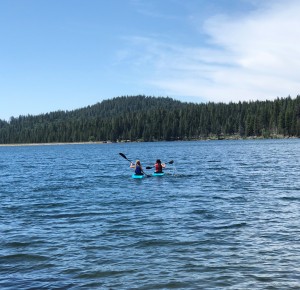 What that might look like, I still don’t have a clear picture of yet, but I told my daughter that we will be visiting lots of places with water in lieu of a pool (and thankfully, we can do that where we live in the middle of nowhere). For those of you who had that great trip planned, the disappointment and the pain of getting refunded is probably extreme, and I am sorry about that. No one wants to continue this way. But, can we find ways to make the best of it? We can wait (which many of us have a hard time doing) until it’s safer to go on that trip (because it really wouldn’t be much fun right now anyway). In the grand scheme of things, so far, we have had two seasons of one year altered from the way we expect them. That’s six months out of the many years that we live. Yes, we can get through it, children and adults too.
What that might look like, I still don’t have a clear picture of yet, but I told my daughter that we will be visiting lots of places with water in lieu of a pool (and thankfully, we can do that where we live in the middle of nowhere). For those of you who had that great trip planned, the disappointment and the pain of getting refunded is probably extreme, and I am sorry about that. No one wants to continue this way. But, can we find ways to make the best of it? We can wait (which many of us have a hard time doing) until it’s safer to go on that trip (because it really wouldn’t be much fun right now anyway). In the grand scheme of things, so far, we have had two seasons of one year altered from the way we expect them. That’s six months out of the many years that we live. Yes, we can get through it, children and adults too. virus shut-down period? I’ve noticed that some moments I’m up, and the next I’m way down. There seems to be no telling when I’m in a “good” mood, “bad” mood, or just feeling in a funk. Usually, my mood is fairly consistent, mostly “even,” but not these days. I noticed that last week when I was doing okay one day, excited about spring and the garden we’re preparing, but the next day I was sad, angry, and feeling hopeless. Yesterday was another one of those days. Why? I wondered. What has changed? Almost nothing, I realized, and that’s part of the problem. Here are a few reasons why you, or other friends or family, might be feeling the same during our self-isolation:
virus shut-down period? I’ve noticed that some moments I’m up, and the next I’m way down. There seems to be no telling when I’m in a “good” mood, “bad” mood, or just feeling in a funk. Usually, my mood is fairly consistent, mostly “even,” but not these days. I noticed that last week when I was doing okay one day, excited about spring and the garden we’re preparing, but the next day I was sad, angry, and feeling hopeless. Yesterday was another one of those days. Why? I wondered. What has changed? Almost nothing, I realized, and that’s part of the problem. Here are a few reasons why you, or other friends or family, might be feeling the same during our self-isolation: jobs at the moment. Some may not have jobs to go back to. My good friend is in the final stretch of her education and finishing up her internship. She has not been able to complete it. Her plans of getting a job, moving, and starting her career have been temporarily altered. She wonders if this carefully crafted plan will happen at all. And she’s terribly disappointed.
jobs at the moment. Some may not have jobs to go back to. My good friend is in the final stretch of her education and finishing up her internship. She has not been able to complete it. Her plans of getting a job, moving, and starting her career have been temporarily altered. She wonders if this carefully crafted plan will happen at all. And she’s terribly disappointed. A few quotes from the days of reading books to my children when they were small still ring in my head. This one, by Kevin Henkes of Lily’s Purple Plastic Purse, is from Lily’s teacher in a note to her after she had a very bad day and got in trouble. He told her, “Today was a difficult day. Tomorrow will be better.” Yes, it will.
A few quotes from the days of reading books to my children when they were small still ring in my head. This one, by Kevin Henkes of Lily’s Purple Plastic Purse, is from Lily’s teacher in a note to her after she had a very bad day and got in trouble. He told her, “Today was a difficult day. Tomorrow will be better.” Yes, it will. California anyway). We’re starting week three of shelter in place, only going out for food or necessities, and for my family, homeschooling. These are trying times, indeed. By Friday, school is out and we need that break – from each other. Despite the inconveniences, and hardships for many who aren’t working right now, we can try to find the good, even if we don’t really feel like it (and I can tell you that no one in Target yesterday felt like it, not even a smile could be had). Here they are anyway:
California anyway). We’re starting week three of shelter in place, only going out for food or necessities, and for my family, homeschooling. These are trying times, indeed. By Friday, school is out and we need that break – from each other. Despite the inconveniences, and hardships for many who aren’t working right now, we can try to find the good, even if we don’t really feel like it (and I can tell you that no one in Target yesterday felt like it, not even a smile could be had). Here they are anyway: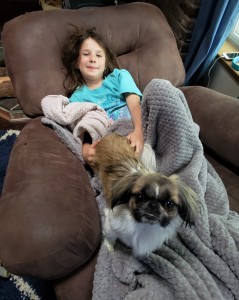 do most of the time we’ve found). So, even if you don’t own a dog, know that those who do are happier and that’s good (as we know, cats could care less).
do most of the time we’ve found). So, even if you don’t own a dog, know that those who do are happier and that’s good (as we know, cats could care less).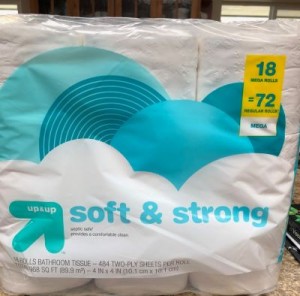 our view for the better. Feeling stuck gets me anxious, frustrated, and clawing at the cage to get out. Feeling safe gives relief and calm. I’m reminding myself of this often.
our view for the better. Feeling stuck gets me anxious, frustrated, and clawing at the cage to get out. Feeling safe gives relief and calm. I’m reminding myself of this often. everything you ever loved about eating. It can be torturous and grueling at times, but it does the job. It clears out the junk I’ve been consuming and the habits that started forming as I reached for another dessert, another glass of wine, another handful of chips… Once the cleanse is over, I am mostly in the groove of eating well again.
everything you ever loved about eating. It can be torturous and grueling at times, but it does the job. It clears out the junk I’ve been consuming and the habits that started forming as I reached for another dessert, another glass of wine, another handful of chips… Once the cleanse is over, I am mostly in the groove of eating well again. went on and she recognized the pre-programmed messages in her head, she let herself just eat what she wanted. She says that when she wanted peanut M&M’s she would have a few, not the whole bag, and be satisfied. She not only lost weight during this year-long experiment, but said the most significant change is that she doesn’t waste “mental energy agonizing over food or body size anymore.” She says she still stresses over potato chips sometimes, but she doesn’t guilt herself or “promise to make up for it.”
went on and she recognized the pre-programmed messages in her head, she let herself just eat what she wanted. She says that when she wanted peanut M&M’s she would have a few, not the whole bag, and be satisfied. She not only lost weight during this year-long experiment, but said the most significant change is that she doesn’t waste “mental energy agonizing over food or body size anymore.” She says she still stresses over potato chips sometimes, but she doesn’t guilt herself or “promise to make up for it.”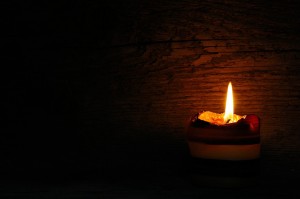 f darkness. We weren’t outraged at PG&E for taking safety measures to ensure that another massive fire didn’t break out and incinerate us all, but it was highly inconvenient. Here are my pros, cons, and observations from the last few days of what felt literally like being “powerless.”
f darkness. We weren’t outraged at PG&E for taking safety measures to ensure that another massive fire didn’t break out and incinerate us all, but it was highly inconvenient. Here are my pros, cons, and observations from the last few days of what felt literally like being “powerless.” d to be cash only (tough because of our plastic currency dependence). Gas pumps won’t work without power, and all of those generators need that other dependent resource (gas) to run. Of course, many would chalk this up to a “first world problem.” Boo-hoo, there was no power for almost three days, and maybe I agree there. But we live lives that rely on electricity and, even with numerous announcements from PG&E, entire communities felt the effects of this shutdown.
d to be cash only (tough because of our plastic currency dependence). Gas pumps won’t work without power, and all of those generators need that other dependent resource (gas) to run. Of course, many would chalk this up to a “first world problem.” Boo-hoo, there was no power for almost three days, and maybe I agree there. But we live lives that rely on electricity and, even with numerous announcements from PG&E, entire communities felt the effects of this shutdown. we’ll examine what helps to make a relationship work (last time I covered
we’ll examine what helps to make a relationship work (last time I covered  week” or “I need affection.”
week” or “I need affection.”